Purpose: To examine the relationship between the functional age (FA) and the objectively measured daily physical activity (PA).
Methods: The subjects of the present investigation were 15 males and 22 females (68±6 yr.). The Anti-Aging-Dock determined the 5 components of FA (Bone age; BA, Hormone-age; HA, Muscle-age; MA, Nervous system-age; NA, Vascular-age; VA). Each participant wore an electronic pedometer (HJ-720IT, Omron Corporation, Kyoto-city, Kyoto Japan) in order to determine daily number of steps (STEP
day) and the time and steps for PA lasting longer >10-min at >60 steps·min
−1 of the step rate (Bout
time and Bout
step). The HA was evaluated by using the standard aging curve of serum DHEA-s and IGF-I concentration.
Result: Simple correlation coefficient showed that the HA significantly associated with STEP
day and Bout
step in female subjects (
p<0.05). A multiple regression analysis showed that the Bout
step and Age came out significant parameter of the HA.
Conclusions: The HA significantly associated with steps Bout
step independently from the STEP
day in middle-aged to older female adults. The bouts of PA lasting >10-min may be an effective PA to protect the age-associated changes in hormonal functions.
抄録全体を表示
